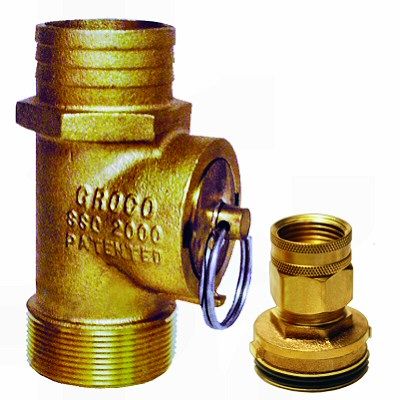whether some experience with the idea of using the raw water pump is an emergency situation, empty the water out of the ship? The valve attached to the bottom and open the second line and valve that sucks pilssistä? second function of the second flushing valves / glycol driving winter maintenance.

We have those (SSC fittings) on the seawater intakes on both mains and the AC pump.
Haven't yet had to test the "emergency pumping" function, but watching the way everything works during maintenance flushes, seems to me it'd work OK.
Thoughts:
- removing the fixed plug and inserting the flush adapter allows some drippage, to varying degrees, during the changeover (I've talked with the Groco guy about a version with the adapter fitting more permanently mounted, perhaps with a valve. No perfect answer to that, yet. Something can be cobbled together... but I've not yet become comfortable with the various ideas so far. See crash valves, below.)
- on larger units (like for our mains), flow is restricted, compared to the mainstream flow
- The flush adapter is necessarily higher off the bilge floor, which would mean it takes LOTS more water inside before it'll start picking up (unless also used with a hose and filter; see below)
- Groco's real crash valves would be better (see SBV series). This is the one with a selection handle so changeover is instantaneous; no drippage assuming attachments are already mounted onto the engine room side
- either option would be best augmented with a hose and strainer (Groco has strainers, too, see BS/BSA series); couple with the flush adapter, the hose would also mitigate the height problem
-Chris








 thank you for sharing this information, to tell the effect on me that I will build my emergency solution to the raw water pump. why not make anything that can save you from unpleasant consequences, even if the need for any damages before a judge (the bilge Pump speed fuse)
thank you for sharing this information, to tell the effect on me that I will build my emergency solution to the raw water pump. why not make anything that can save you from unpleasant consequences, even if the need for any damages before a judge (the bilge Pump speed fuse)